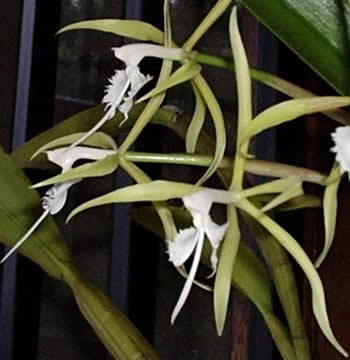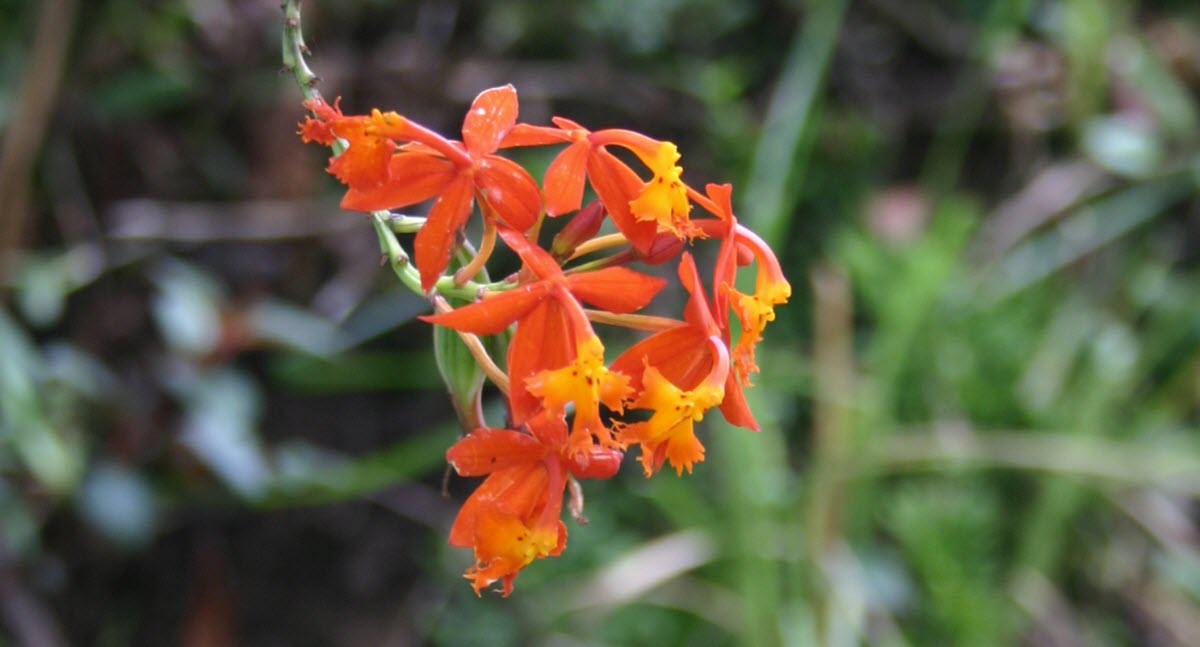Epidendrum Orchid Care
Contents
The genus Epidendrum is one of the most prolific orchid groups and these orchids are today kept all over the world. The Epidendrum orchid is known as the crucifix orchid or star orchid, and it is also colloquially referred to as poor man’s orchid since the flowers are small compared to most other orchids and not as strikingly flamboyant. In the old days when most orchids were the joy of the upper classes only, the charming Epidendrum orchids were both affordable and widely available.

Epidendrum ciliare – Picture by Martín Javier Battiti
This naturally made them immensely popular among all the orchid lovers who could not afford to spend enormous sums of money on their hobby. Epidendrum orchids are also easy to propagate and capable of coping with rich array of growing conditions, including being grown outdoors in temperate parts of the world. Epidendrum orchid care is not very difficult and you can yield many plants from a single stem. In addition to this, Epidendrum orchids are famous for being resilient to pest attacks and for their capacity of producing flowers year round.
Potting medium
A majority of the Epidendrum species grow on trees, but some grown on rock or in thick moss on the ground instead, e.g. Epidendrum calanthum and Epidendrum saxatile. Learning more about the growth habits of your particular orchid is always a good idea if your want to provide it with top-notch Epidendrum orchid care. A majority of the Epidendrum species can be grown in fine textured orchid mix, preferably in a compost with sphagnum moss, bark and tree fern fibre.
Repotting a Epidendrum orchid
Epidendrum orchids need to be repotted every second year or when the plant outgrow its pot. Ideally repot the Epidendrum orchid during the end of the
Temperature
Epidendrum orchids are found in a wide range of different habitats, from cool cloud forests at high elevations to dry tropical forests and humid lowland jungles. You can encounter Epidendrum orchids in the forest as well as in grasslands, and they occur from Florida in the United States down to tropical Argentina. This naturally means that it is hard to give any specific guidelines that will fit all possible Epidendrum orchids. A majority of the Epidendrum species and hybrids that are common in the floral trade prefers intermediate to warm conditions, but there are several notable exceptions such as the popular Epidendrum radicans which favours a cool climate. If you want to provide your plant with ideal Epidendrum orchid care, it is therefore always a good idea to research your particular orchid to find out more about its requirements.

Epidendrum radicans
Light
Place your Epidendrum orchid in a spot where it will receive plenty of interdict light. Strong direct light can scorch the leaves. Epidendrum orchids prefer east and west windows.
Watering
When the potting medium starts to dry out, it is time to water your Epidendrum orchid again. The exact interval will depend on a wide range of factors, such as temperature and air humidity. This orchid needs to be watered year round without any real resting period.
Nutrients
Epidendrum orchids are known to appreciate fairly high amounts of fertilizer. Insufficient amounts of nutrients can lead to less dense flower spikes, weaker leaves, and fragile roots. The right type of fertilizer depends primarily on the light conditions. Epidendrum orchids grown in environments where they receive a lot of light will need more nitrogen in the fertilizer than Epidendrum orchids growing in a low-light environment, e.g. indoors in the northern part of the world. If you give your Epidendrum orchid a fertilizer with too much nitrogen it can result in an elongated, straggling growth pattern.
Epidendrum orchid care tips!
When your Epidendrum orchid has finished flowering you should leave the spike on the plant since the same spike can produce more blossoms within a few months. If you are lucky, the spike will also produce so called keikis. Keiki is the Hawaiian word for baby and an orchid keiki is a clone that will develop its own roots. Once the roots are 2-4 inches long, you can move the keiki to its own pot.